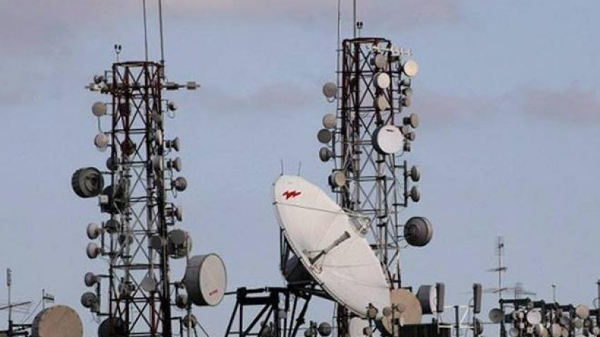According to market research organisations, India is nowhere near deploying 5G services, but it has already surpassed the United States as the fourth largest market for devices supporting the next-generation technology in terms of shipments.
According to IDC, India lags behind China, the United States, and Japan in terms of 5G smartphone shipments, with an average selling price of US$ 410. This is despite the fact that Reliance Jio, Bharti Airtel, and Vodafone Idea are testing 5G networks, and the supporting airwaves auction isn’t scheduled until early 2022.
“The Chinese market is driving the ecosystem. Brands are creating more SKUs, and then companies like Mediatek are providing inexpensive chipsets, which is helping the market open up. Mr. Navkendar Singh, research director, client devices & IPDS, IDC India, told ET. “Because the ecosystem is driven by China, and they are ahead of the curve, there is a device first strategy.”
According to IDC, India will ship over 40 million 5G smartphones by the end of 2021, accounting for around 24% of total shipments, up from around 3.5 million in 2020. Counterpoint Research estimates that about 32 million 5G devices will be sold, accounting for roughly 19% of the total, while CyberMedia Research (CMR) estimates that around 25-30 million will be sold.
“5G is still one of the top three things people want in a smartphone. Consumers want future-proof gadgets, which is where 5G fits in, according to Mr. Tarun Pathak, research director at Counterpoint Research.
However, according to Mr. Singh, 5G is still not a “show-stopper” feature for phone users, but companies are promoting 5G capabilities as a topic of conversation through marketing efforts.
“5G has grown faster than any other wireless standard before it, with widespread acceptance in important areas like as China, the United States, and Europe. In India, however, gadgets are being offered in the market even before the network is fully operational. One of the markets where the device ecosystem predates the technological shift. By the end of this year, we expect about 32 million 5G handsets to be sold in India (~19% of the overall smartphone market),” Mr. Pathak remarked
5G smartphone sales are projected to reach about 25-30 million by the end of the year, according to Mr. Prabhu Ram, head-industry intelligence group at market intelligence firm CyberMedia Research (CMR).
“We anticipate 5G will continue to accelerate and diffuse to more accessible and cheaper pricing tiers as we move forward,” Mr. Ram added.
According to Counterpoint, the percentage of 5G cellphones is steadily growing, surpassing 14% in the most recent quarter. According to CMR India, in Q2 2021, 5G smartphone shipments accounted for 13% of total smartphone shipments.
Corning, a US-based Gorilla Glass manufacturer that works with nearly all smartphone makers in India and throughout the world, claims that 5G would speed up the replacement cycle since consumers in India are more likely to replace their phones. “Smartphone adoption is becoming more aggressive. The same thing will happen with 5G. “We’ll drive quick replacement cycles and have a sharp penetration curve,” Mr. John Bayne, Senior Vice President and General Manager of Mobile Consumer Electronics at Corning Incorporated, told ET.
5G phones are now available for as little as Rs. 13,999 (US$ 188.53), and analysts predict that prices will continue to plummet.
“We’ve seen 5G devices for as little as US$ 140 throughout the world, and India will be no different. However, we feel that a pricing war in 5G is still some time away since it is still costly to build a 5G phone without sacrificing on other critical features from a BoM (bills of material) standpoint. As a result, brands would be careful” Mr. Pathak said.
According to IDC, Realme had the largest 5G contribution among the top 5 vendors and dominated the sector with a 23% share in 2Q21, followed by OnePlus and Oppo. In the second quarter, OnePlus was the market leader in the premium 5G market.
“With Mediatek Dimensity chipsets, Realme and Oppo have been fairly active in offering multiple mode mid-premium segments,” Singh said, adding that Xiaomi would soon join the race and become competitive.
“By releasing the realme 8 5G in the sub-15,000 category, Realme continues to push 5G smartphone accessibility and affordability. According to CMR India researchers, “94% of realme 5G smartphones were value for money devices.”
Realme has announced that it will massify 5G technology by offering 5G smartphones to customers in India for less than Rs. 10,000 (< US$ 134) next year. It is collaborating with chipmakers such as Mediatek and other industry partners to bring low-cost 5G handsets to market.
Realme smartphones costing more than Rs. 15,000 (US$ 200) will be 5G-ready in the second half of 2021, according to the firm.
Reliance In collaboration with Ericsson, Nokia, and Samsung, Jio, Bharti Airtel, and Vodafone Idea have already begun 5G field experiments in several cities in the mid and mmwave bands. In Navi Mumbai, Jio is also testing its own 5G radio and core technology.
Source: IBEF
You may also like
-
Trade Connect E-platform For Exports Is Single Window, Fast, Accessible And Transformational: Shri Piyush Goyal
-
Dot Simplifies Approval Processes For Telecom Licenses And Wireless Equipment
-
Coal Production and Supply Trends on Positive Trajectory
-
Union Minister To Release Booklets On Promotion Of Indigenous Species & Conservation Of States Fishes
-
2nd India-Japan Finance Dialogue held in Tokyo on 6th September, 2024
